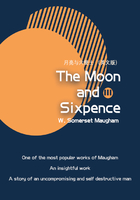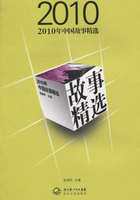CRIMMIGRATION
On September 10, 2001, Cecilia Mu?oz walked into the White House with a half-dozen other immigration advocates. Known for having good relations with Latinos, President Bush had recently directed his domestic policy staff to meet with the advocates and begin hammering out a new immigration policy. Throughout his tenure as governor of Texas, Bush resisted English-only bills and recruited a good portion of the Latino electorate to the Republican Party. A friendlier, more respectful Immigration and Naturalization Service was among his presidential campaign promises. In 2000, he expressed the benign view of immigration that most Americans have taken when he told the League of United Latin American Citizens that “Latinos come to the U.S. to seek the same dreams that have inspired millions of others: they want a better life for their children. . . . Immigration is not a problem to be solved, it is the sign of a successful nation. New Americans are to be welcomed as neighbors and not to be feared as strangers.”
In supporting a more open immigration system, Bush was responding to competing political pressures. Both the business community and the Latinos who had formed such a large portion of his electoral base wanted expanded legal immigration—but advocating immigration would put Bush in conflict with the restrictionist arm of the Republican Party.
Mu?oz was well aware of these clashes as the vice president of policy at the National Council of La Raza (NCLR), a thirty-three-year-old nonpartisan Latino organization with hundreds of local affiliates that provided services to Latinos and to low-income people. Her job was to limit the bad and maximize the good in the immigration measures coming out of Congress from year to year. Two months earlier, the New York Times had broken the news that President Bush and Mexican President Vicente Fox were crafting a plan to legalize 3 million Mexicans living in the United States without documents.[1] Although Mu?oz had since had to push the administration to follow through on that commitment, this meeting gave her some hope that the process would move forward with presidential support. The White House domestic policy staff had pulled in the Departments of Labor, Education, and Health and Human Services.
It quickly became clear that the White House aide, sharply dressed in very high heels and a tightly tailored dark suit, was more interested in ending illegal immigration than in working out a legalization plan. Each time the advocates proposed specific ideas about how to legalize undocumented people, the aide redirected the conversation to discussing enforcement measures that would keep out future migrants. Mu?oz had dealt with the woman before, and had found her singularly lacking in any desire to support legalization. The meeting lasted less than two hours and produced nothing.
Unsurprised, Mu?oz prepared herself for what looked to be a more promising meeting the next day with the staffs of Senators Tom Daschle (D-S.D.), Ted Kennedy (D-Mass.), and Dick Gephardt (D-Mo.), who had already released a policy manifesto calling for legalization for any immigrant who had worked in the U.S. at least ninety days within the last eighteen months. This included a guest worker program, which the business community wanted, but it also allowed those guest workers to unionize, which the business community opposed. In addition, the proposal reduced the backlogs on family unification visas for current legal immigrants. Mu?oz planned to negotiate the introduction of the bill that Cassandra Butts, Gephardt's chief of staff, had drafted.
Mu?oz was in fact amazed that members of Congress were meeting with members of the immigrant rights movement about legalization. She had been talking quietly with colleagues since the late 1990s about the need to move another legalization program. The 1986 Immigration Control and Reform Act had last provided such a program, giving 3 million undocumented people a path to citizenship. In twenty years, the undocumented population had grown again to about 9 million. Before Bush's statements, she had thought it would be impossible to bring up another legalization plan in Washington until there had been at least five years of organizing to demand it.
That September 11, 2001, meeting, optimistically planned during what had been a decade-long economic boom, never took place. It would be a full year before Mu?oz could return to the legalization issue, and the five years that she thought she could take off the timeline would be added back on before legalization could again gain any traction in Washington. She would spend the intervening time working fruitlessly to separate the image of immigrant from that of terrorist in a nation that had gone from the shock of September 11 to a state of war in what felt like an instant.
An Open Door—For Some
The idea that “America is a nation of immigrants” is one of the world's most resonant stories. It hides a great number of wrongs, depicting the settlement of this country as a matter of volunteerism rather than violence, and masking the forced land contributions of the indigenous people and the forced labor contributions of enslaved Africans. This image endures, however, because it has been true for so many Americans whose ancestors came here to escape the hierarchies of other countries, from serfdom and autocracy to pogroms.
Although immigration policy has always favored entrants from some countries over others, the U.S. has welcomed and integrated tens of millions of immigrants over the course of its history. There have been plenty of clashes, but over time the United States has come to see itself as a multicultural society— a melting pot in which many different kinds of people live and work together, contributing parts of their own cultures to a new American culture. In the large cities where most immigrants initially established their communities, people became accustomed to seeing and being with other ethnic groups. Because virtually everyone had immigrant roots, the principle of welcome was important to the American self-image and led many ordinary Americans to see immigration in a largely positive light. Mamdouh himself benefited tremendously from this open posture, generally receiving a kind welcome from New Yorkers when he arrived in the late 1980s.
This attitude of acceptance was, however, often more aspirational than real. U.S. history is full of attempts to exclude people who did not seem at the time to conform to the image of a “real American.” And the treatment of immigrants has always been racialized. Over the years racial hierarchies have shifted and racial definitions changed as European immigrants gained status while Mexican and other Third World immigrants did not. Through a combination of straightforward exclusion, bureaucratic exceptions, and the creation of different mechanisms for entering the country, federal law expanded or reduced immigration based on labor needs, economic anxiety, war, and xenophobia.
Differential treatment was justified by constructing the image of an ideal American identity as white, Anglo-Saxon, and Protestant. In fact, not all Europeans have always been considered white: the flood of Irish famine emigrants during the 1840s sparked a strong nativist reaction, which viewed the Irish as both physically and culturally similar to blacks.[2] It took a generation or more for the Irish to gain secure status as whites in America's racial/ethnic hierarchy. The new immigration of the late nineteenth century was dominated by Italians, Poles, Hungarians, Jews, and a range of other groups from southern and eastern Europe, and again it was widely argued that these new immigrants were inferior to native-born whites.[3] The charges against them sound familiar: they were reviled for their refusal to speak English, for their political and economic demands on American corporations, for being so poor that they became “public charges” or undercut the wages of the native-born workers, and for their immoral sexual behavior. Then, as now, undesirable immigrants were equated with criminals who could not be rehabilitated.
The growing U.S. dealt with its labor needs by constantly switching preferences between different immigrant populations. Chinese workers were brought over as contract laborers throughout the 1800s to build up the West, particularly its railroad systems. For almost a century after the Mexican-American war in 1848, Mexicans could travel freely within the United States, and in the early twentieth century tens of thousands of Mexicans crossed the border looking for work, especially after the Mexican Revolution began in 1910. In 1907, the Dillingham Commission identified Mexican workers as the best solution to the labor shortage in the southwestern U.S., but warned against immigrants from southern and eastern Europe as a serious threat to American society.
No one was safe from nativist attack, however, and the immigrants who looked most unlike other Americans made easy targets for xenophobes. A series of laws were enacted to limit the mobility of Chinese workers.[4] In 1882, for example, the Chinese Exclusion Act, a huge victory for the era's restrictionists, suspended Chinese immigration for ten years; unauthorized Chinese immigrants could be deported and the Chinese were prohibited from naturalization. The ban was eventually broadened to cover the entire Asia/Pacific Triangle.
Both World War I and labor unrest increased public willingness to restrict immigration. The Immigration Acts of 1920 and 1924 limited the numbers of immigrants to 150,000 per year, less than a quarter of the immigration rate until then. This was the most restrictive set of immigration policies the United States has ever had. These laws crafted large quotas for England, Germany, and Ireland while limiting immigration from countries like Russia and Italy. Illegal immigration was so common among Italians, for example, that an urban legend grew up around the origin of the derogatory term wop. Its real etymology is from the Spanish word guapo, applied in Spain to denigrate Italian agricultural workers, but to this day many Italian Americans believe it was an acronym for “without papers.”
In 1929 Congress made it a misdemeanor to enter the United States without documents and a felony to remain in the country. Thousands of southern and eastern Europeans, however, continued to come in just that manner.[6] As immigrants were detained and deported for violating the quota policies, social reformers began to take up the causes of longtime residents who had committed only minor offenses. It was wrong to separate people who had longstanding ties to the United States from their families and communities, these reformers argued. Rather than punishing them for the poverty and alienation that was forced upon them by the immigration laws, the country should find ways to alleviate their situation, starting with reversing their deportation orders. They won a series of changes that gave immigration officials the ability to change someone's status.[6]
Mexicans were left behind by this liberalization, not so much because they were explicitly excluded, but because they had little access to the mechanisms through which they could change their status. While programs that affected Europeans were increasingly liberalized in the 1930s and 1940s, those affecting Mexicans remained restrictionist. Europeans could come to live permanently, but Mexicans could come only to work temporarily through guest worker programs, such as the Bracero Program, created during World War II. This temporary worker program recruited 4.5 million Mexicans before it was cancelled in 1964. Braceros were intensely abused by their employers, and once the country decided it didn't need their labor anymore, they became vulnerable to deportation.[7] Undocumented immigration from Mexico rose in this period—by some estimates as much as 6,000 percent—and Operation Wetback in 1954 was the first massive deportation sweep in the U.S. On its first day alone, 4,000 people were captured for deportation.[8] The development of this hierarchy created the enduring image of the Mexican as an illegal immigrant, ignoring the large numbers of Europeans who had also held that status.
The civil rights movement and other progressive movements of the 1960s changed the national political scene, and blatant discrimination in immigration policy lost favor among public officials. In 1965, Congress changed the Immigration and Nationality Act and the Immigration Reform and Control Act to remove the national quotas left from the 1920s. Congress also raised the absolute numbers of immigrants who could enter. As a result, immigration increased, both in absolute numbers and in the movement of people from previously excluded parts of the world. The new law included other preferences that weren't explicitly racial, but they had a racial effect that followed the established pattern. The identity of the preferred immigrant changed some, but the fact of preference didn't. The new laws sought to recruit professionals, which disadvantaged the poor. They also privileged family reunification, which continued existing racial patterns. Only people who were already in the country could sponsor family members to come. People thus continued to immigrate without papers. As the underfunded immigration bureaucracy built enormous backlogs of people trying to get in legally, the number of undocumented immigrants grew as well.
The Right to Be Present
The 1986 legalization program reflected the Reagan Administration's pragmatic attempt to deal with the reality of undocumented immigration. Mu?oz herself had helped thousands of people change their status while working at Catholic Charities in the late 1980s. She was surprised and thrilled to hear in July 2001 that President Bush was negotiating with President Vicente Fox of Mexico to legalize undocumented Mexicans living in the United States and seemed poised to extend the “right to be present” to Mexicans. Mu?oz got word of it during NCLR's annual convention, which was in Milwaukee that year. The next day, Senator John McCain (R-Ariz.) said he understood the reality that people were already here and that provisions needed to be made.[9] The New York Times and Washington Post wrote editorials supporting legalization.[10] Within weeks, Bush had raised the possibility of legalizing other immigrants as well. “We'll consider all folks here,” he said.[11]
Bush's campaign platform thus seemed to be a remarkable step in a progressive direction. The excitement about his promises to come up with a legalization plan proved premature, however, with the White House spending some weeks backing away from fast action. By early August, a White House spokesman was saying, “Let me do everything I can to downplay your expectations. . . . I don't think I'm in a position to say where we'll be in September.”[12] At the end of August, Bush told reporters that he and President Fox would come out with principles but not a full-out plan during Fox's September visit.[13]
Feeling the opportunity slipping away, Mu?oz chased down all these statements. She warned that it would be unwise for Bush to abandon expectations that he had raised, and she pushed back against the notion that legalization amounted to amnesty. “We had a legalization program under Ronald Reagan, and the sky did not fall,” she said to reporters. “Everybody understands and winks and nods at industry. Who are the real lawbreakers here? There is a general understanding that businesses hire these folks and bring them up here, or at least encourage them to come. We need to shift our laws so there is a rationality to them.”[14]
Although there is a great deal of talk about the criminality of undocumented immigrants, the way things worked in real life suggested that many Americans didn't really want to stop illegal immigration. The laws that were designed to deter illegal entry were largely symbolic. People continued to come without documents, and in spite of employer sanctions most employers looked the other way unless they needed to use the law to control their employees. The immigration system as a whole was underfunded and outdated. While the national debate focused on how to keep criminalizing immigrants, Mu?oz and her colleagues had been unable to reform the system itself to make legal immigration easier.
Even so, the debate was moving at a much faster pace than Mu?oz could have predicted.
As Mu?oz sat in Senator Tom Daschle's waiting room on September 11, watching the planes hitting the Twin Towers, Cassandra Butts ran in.
“Turn to Channel 5,” she said. “I hear the Pentagon's been hit!”
As they changed the channel, Butts said, “I've got to go.” For the next two years, Mu?oz would feel guilty about letting her return to the Capitol. As Mu?oz herself started leaving the building, a security guard announced that another plane was headed toward the Capitol, so she and her colleagues ran to the closest offices, at the National Immigration Forum. In the midst of the chaos her mother called, and Mu?oz was surprised to hear her crying. She reassured her mother that she was all right and decided to find her husband and head home. She found a cab that took her across town to where he'd been waiting for a meeting, and they picked up his car and drove home. Mu?oz's mother-in-law, who had been visiting and meant to return to London the next day, was glued to the television in the recreation room. Mu?oz took out her rosary and used the beads to meditate. The couple then picked up their two daughters, then six and nine, from school, which had closed early. It was a spectacularly beautiful day, and they didn't want the kids in front of the television, so Mu?oz took the elder one out for a long-promised bike-riding lesson. “This way, you'll always remember a happy thing about today,” Mu?oz told her daughter.
At 4 p.m., Mu?oz's mother called again to say that her friend Josh Rosenthal had been in the South Tower and had not been heard from. Mu?oz had met Rosenthal when she was nine and he had become her elder brother's high school debating partner and best friend. She'd grown up playing poker with the two boys, winning quite often, as their families became increasingly integrated. Rosenthal had informally moved in with the Mu?ozes when his mother had surgery, had passed on his college mentor to Mu?oz, and they had grieved together when Rosenthal's brother died unexpectedly of a heart condition. She had last seen him at her parents' fiftieth anniversary party. As time passed, it became increasingly painful for Mu?oz to hear the government invoking the 9/11 victims to justify racial profiling as a national security measure.
Nevertheless, Mu?oz's own family history motivated her to keep trying. Slightly built with wavy light brown hair, Mu?oz was born in Detroit and raised in its middle-class suburbs, ensconced in a tight Bolivian immigrant community that was largely comprised of her own extended family. Her paternal grandfather had attended the University of Michigan in the 1920s before returning to La Paz to build the only house with a front porch in that city. Her own parents had come to the U.S. as newlyweds in 1950 so that her father could finish an engineering program that he had started but never finished in the 1940s. Disturbed by political unrest in Bolivia, the couple decided to stay in Michigan. By the time things stabilized in Bolivia, Mu?oz's father was working in the auto industry and the family had four U.S.-born children. After listening to President Kennedy's speech about the Cuban Missile Crisis, Mu?oz's father turned to her mother as they watched their children sleeping.
“Should we go back?”
“This is our home now,” her mother replied.
Mu?oz grew up in the supremely segregated suburb of Livonia, essentially in a white family that spoke Spanish, exotic in nothing but language. Her mother was of Spanish descent and light skinned, and her father, though he had more Indian heritage, also happened to have blue eyes. They had few direct experiences of racism. The most dramatic incidents were funny and pathetic rather than violent. In her parents' first apartment, the landlady heard them speaking Spanish and chastised them for “talking Mexican” in her house, which they found hilariously ignorant. All of the Latinos Mu?oz knew as a child were related to her, and Thanksgiving dinner at her house included forty people eating turkey with Bolivian music playing in the background.
Mu?oz had heard about the civil rights movement, which her parents told her was also their struggle. But she didn't feel a part of it until one day in high school when her boyfriend was over at the house listening to her father express his horror at the Central American wars, including the role of the United States.
“Well, you know, Cecilia,” her boyfriend said, “if we do end up in a war, it seems like your parents should be interned. I couldn't know where their loyalties lay.” Mu?oz was astonished that anyone could think her family was anything other than fully American.
Merging Immigration Law and Criminal Law
The 1965 Immigration and Nationality Act removed national quotas, opening the United States to immigration from all the countries that had previously been restricted. These new immigrants in turn slowly began to change the demographics of the United States, fueling a new, but familiar, nativist backlash. Modern nativists came up with contemporary ways to criminalize and alienate immigrants. They made it illegal to hire undocumented workers, expanded the list of crimes for which legal immigrants could be deported, and cut off both legal and undocumented immigrants from a wide range of public services. Even before September 11, they had tied the threat of terrorism to immigration, a strategy that legal scholar Juliet Stumpf has dubbed “crimmigration.”[15]
Under crimmigration, states and the federal government created a number of new laws throughout the 1980s and 1990s to punish border crossers and visa violators, a policy direction that recasts immigration law as criminal law and immigrants as lawbreakers.
The crimmigration impulse has waxed and waned over time; when it surfaces, it always has a strong racial component. The racial agitation prevalent in crimmigration-friendly eras raises the temperature all around the table and makes it less likely that policymakers and citizens will be able to think straight about what policies make sense. September 11 fueled that impulse, making it much harder for Mu?oz to do her work. The national day of mourning followed, and it took a week for Mu?oz to be able to focus again on work. It took even longer for her to realize that the possibilities of winning legalization for the undocumented had changed forever, that she would never again be able to speak about immigration policy as separate from national security.
The crimmigration approach, however, creates significant new problems that are often invisible to the general public. First, it makes citizenship a requirement for basic civil and constitutional rights, even such very basic ones as the right to due process. Second, the distinctions between those who deserve rights and those who do not are intensely racialized. They are unevenly applied among immigrants themselves and they rely on racial stereotyping— how else can you tell whether a person is deserving other than by looking at them? The main effect of crimmigration is to pit Americans and immigrants against each other; it has not, however, slowed down either undocumented or legal immigration at all. Moreover, it results in a profoundly, and racially, divided community that is incapable of solving its problems. When Americans face hard times, it's easier to target a particular group of people as the cause than to address the larger system. Casting foreigners as criminals protects that larger system from critique, and at the same time diverts communities from seeking real solutions.
These trends were exemplified in employer sanctions, increased border security, expanded criminal deportation, others suspending the rights of terrorism suspects and laws excluding immigrants from public services. The 1986 Immigration Reform and Control Act (IRCA) legalized millions of undocumented immigrants, but it also established sanctions, such as fines and jail time for employers who knowingly hired undocumented workers. It's unclear that employer sanctions truly deter rogue employers, since only a minuscule number of employers are prosecuted each year for hiring undocumented workers. Research suggests that sanctions may have far greater impact in preventing immigrant workers from resisting exploitation. Because there was so much more focus on routing them out, undocumented immigrants were reluctant to report wage or safety violations to the Labor Department. As the demographics of entire industries shifted to become dominated by immigrant labor, employers frequently used the threat of deportation to bust union organizing campaigns.[16]
Unions complained that employers called the immigration authorities themselves to report an undocumented workforce in an organizing campaign. It was cheaper for employers to pay the resulting fine than to improve the wages and working conditions a union contract would have required.[17] Congress also increased funding for the Border Patrol significantly. Between 1986 and 2002 the number of officers tripled and the number of hours they patrolled the border grew about eightfold, but the rate of apprehension actually fell from 33 percent in the early 1980s to an all-time low of 5 percent in 2002. Restrictionists argued that fewer people were crossing the border illegally, but it is more likely that they just found new ways of avoiding capture. These new ways were undoubtedly more dangerous, but the numbers of undocumented people continued to rise.[18]
Another school of restrictionists focused on fiscal anxieties, the idea that immigrants had to be prevented from using up finite public resources. These attacks echoed those of earlier generations against immigrants as being “liable to become a public charge.” Undocumented immigrants became ineligible for virtually all federal and state benefits, except for emergency medical care, immunization programs, and disaster relief.[19] The notion of ending the immigration drain on public funds was encoded into the Personal Responsibility and Work Opportunities Act of 1996, which radically changed the welfare system overall, and which cut legal immigrants off from food stamps, Medicaid, and Supplemental Security Income (for the elderly and disabled), generating threats of suicide among elderly immigrants around the country. Only under great pressure did Congress restore Social Security benefits for those populations.
Since the late 1980s, federal policies for criminal deportation have made it easier to treat immigration violations as crimes, while also adding to the list of existing crimes that could trigger deportation of legal residents and people who were in the country waiting for their papers. The problem with this list wasn't so much that these acts were not crimes, but that the government set a pattern of creating increasingly harsh punishment for an ever-growing list of decreasingly important crimes. For example, the Immigration Act of 1990 defined an aggravated felony as any crime of violence for which the sentence was at least five years, even if the statutes under which immigrants were convicted defined the crime as less serious.
This trend created a secondary class in the eyes of the law: this class, comprising foreigners, some of whom had been in the country for a very long time, had fewer rights than citizens. In some cases, they were never tried and convicted, but simply deported without having had access to an attorney. (Since immigration courts are administrative rather than criminal courts, they do not guarantee the right to an attorney.) Deportation amounted to exile for immigrants who had built families, businesses, and communities in the United States. Those ties were the most important consideration in the 1965 reforms that removed many of the 1920s restrictions. As the color of the immigrant population changed, however, consideration of family ties was abandoned.
Finally, the Antiterrorism and Effective Death Penalty Act of 1996 was a series of laws to “deter terrorism, provide justice for victims, provide for an effective death penalty, and for other purposes.” It allowed the government to suspend the writ of habeas corpus in terrorism cases. Although it didn't explicitly target immigrants, it would be used later to suspend the civil rights of thousands.
Ultimately, the growing list of deportable offenses reinforced the impression that foreigners, whether legal residents or not, did not deserve even basic constitutional rights, further separating them from American citizens. This pattern helped accustom Americans to the idea that it was all right to deny rights to some people, and to create life-long punishments for even petty crimes. Collateral punishment—serving one's sentence not only in prison, but through a restricted life afterward—is something immigrants share with other marginalized communities. African Americans, for example, suffered badly from this trend as states passed laws that doubly punished ex-prisoners by making it illegal for them to vote, live in public housing, or receive state licenses for certain kinds of work. Activists were also affected after September 11, when numerous civil liberties were suspended. Once you create a class of not-quite citizen, the possibility that government will add more people to that class grows and grows.[20]
With these policies, the merging of immigration and criminal law—the essence of “crimmigration”—became essentially complete. Under crimmigration, legal immigrants have fewer constitutional rights than citizens, and unauthorized immigrants have virtually none. The government's burden of proof is lower for immigration matters than for criminal matters, so it has increasingly used immigration law to arrest and detain terrorism suspects.[21] Immigrants have fewer rights, and so law enforcement can get around the need to respect the right to privacy, the right not to incriminate oneself, and, in some cases, the right to due process, by engaging the immigration courts rather than the criminal justice system.
The Impact of 9/11
Although it took Mu?oz a long time after September 11 to accept that the legalization debate had ended for the moment, Mark Krikorian realized it right away. Krikorian is the executive director of the Center for Immigration Studies (CIS), a think tank whose motto is “Pro immigrant, low immigration.” Despite the neutral name of his organization, Krikorian was a central figure in the restrictionist movement. Even with a small staff, CIS produced prodigious amounts of research justifying immigration restrictions, and Krikorian himself was widely quoted in the press. His style was less shrill and more intellectual than many of the other restrictionist leaders, but his point was nevertheless the same—immigration on a large scale had no place in today's United States.[22]
Surprisingly, Krikorian is himself the grandson of Armenian immigrants who escaped being killed during the Turkish genocide of the early twentieth century. His grandfathers had emigrated before the genocide started. One of his grandmothers had been sold into slavery, eventually escaping and working as a domestic servant in France before coming to the U.S. Krikorian grew up speaking Armenian, although he wouldn't call himself fully bilingual. After attending the Fletcher School of International Relations and spending two years in Russian Armenia he tried to get a job at U.S. English, Ron Unz's anti-bilingual education lobby organization. U.S. English had no jobs but referred him to the Federation for American Immigration Reform (FAIR), where he became the editor of the organization's newsletter. After a stint with a news service in Virginia's Shenandoah Valley, Krikorian moved to CIS, an immigration-control outfit looking for a media-savvy director.
One of Krikorian's central arguments against immigration was that current immigrants were not engaged in the Americanization processes available to his grandparents and parents. He frequently cited the fact that his mother had to memorize the Gettysburg Address in school, wondering if the big-city school systems that are available to immigrants today, so influenced as they were by multiculturalism, even taught the Gettysburg Address at all. To his mind, the technological features of modern life—easy travel and global communication—made it harder for new immigrants to break ties with their home country and develop loyalty to the United States.
On September 11, as Mu?oz waited for her meeting to start at the Capitol, Krikorian was in his office. Everyone left, which struck Krikorian as foolish since they would then be sitting in gridlocked traffic. He stayed, transfixed by the television, until a reporter called him that afternoon. The reporter had already concluded that the attacks would bring an end to Bush's legalization plan, and Krikorian agreed with him. On September 17, he was quoted in the press as saying, “The issue of amnesty for illegal Mexican aliens is out of the question. It's defunct.”[23]
Because six of the nineteen hijackers had overstayed tourist and student visas, the movement to limit immigration found fertile ground in linking foreignness to the threat of terrorism, even though visa issuance is not an immigration matter.[24] Mu?oz's chief rival organizations, FAIR and CIS, both found their stars rising. Krikorian pulled up data on the number of Muslims entering the country and argued that, rather than racially profiling them, the nation should cut legal immigration altogether to reduce the pool of potential terrorists.
People who had traditionally been in favor of immigration began switching sides. Ron Unz, who had opposed bilingual education but was supported immigration, changed his position. American Jews, with their long history of refugee immigration, discrimination, and assimilation in the United States, felt particularly challenged. Mu?oz was shocked to get a call from the American Jewish Committee, which had always been a staunch ally, asking if the AJC should reconsider its support of family reunification policies. Before 9/11, Krikorian had been talking with the policy director of the American Jewish Committee, though with little hope of actually converting him. After the attacks, however, the same person sent Krikorian an analysis of the effect of current immigration on American Jews in the context of September 11 and in the larger context of synagogue vandalism and anti-Semitic attacks in Europe. Krikorian was invited to speak to the board of directors. He sensed the organization's ambivalence; its members were clearly proud of their history of supporting open immigration, but wary of the large numbers of Arabs entering the country. Krikorian thought, however, that an immigration policy aimed at limiting Arabs would be impossible in today's multicultural political climate.
A growing number of Americans, though, did support singling out Arabs and Muslims. Polls showed renewed support for racial profiling as a security measure and emerging support for limiting immigration. A CNN/USA Today/Gallup poll taken a few days after the attacks revealed that a majority of Americans backed proposals targeting people of Arab descent. Fifty-eight percent supported more intensive security checks for Arabs, including those who were citizens; 49 percent favored special identification cards for such people; and 32 percent thought “special surveillance” was justified.[25]
Government action followed suit. Between mid-September and the end of November, the FBI visited thousands of Muslim homes for “voluntary” questioning, developed a watch list of 5,000 Muslims, South Asians, and Arabs, and held some 1,200 Muslim men indefinitely in secret detention facilities without notifying their families or allowing them access to attorneys. Only a tiny number of anti-terrorism charges were brought, however, and there have been no convictions as a result of this process. Untold numbers of people, many waiting for their immigration cases to be adjudicated in the backlogged system, were deported or left voluntarily. All refugee admissions were immediately suspended—even though none of the 9/11 attackers had gained entry to the U.S. as refugees.
Racial Profiling
Cecilia Mu?oz spent the rest of 2001 formulating a workable argument to prevent the conflation of immigration policy and national security. To temper the development of anti-immigrant and repressive regulations in the USA Patriot Act, she drew distinctions between visa issuance and immigration, hoping that the State Department would then figure out how not to issue visas to the wrong people. She argued that encouraging mass scrutiny would drive immigrants, both legal and undocumented, deeply underground, and that pulling people out of the shadows would reduce the size of the haystack within which police sought potential terrorists. Advocates managed to keep many of the worst provisions out of the act, but could not prevent a substantial expansion of the government's power to spy on, detain, and suspend due process for U.S. residents in the name of fighting terrorism.
One night in October, Mu?oz sat in the green room at CNN preparing to debate conservative commentator Pat Buchanan. As each sat for makeup, Mu?oz could easily hear Buchanan chatting animatedly with his makeup artist, crowing about the effect that 9/11 had had on the immigration debate. While Buchanan congratulated himself for taking advantage of the opportunity to stir things up, Mu?oz's head filled with images of Sikhs, South Asians, and Muslims being attacked.
The first murders resulting from 9/11 hate crimes had received scant press attention. Sikh-Americans' turbans made them an identifiable target for racists and they suffered numerous assaults, including at least two murders that took place on a single day, September 15. First, Balbir Singh Sodhi was shot outside his own gas station in Mesa, Arizona, by a man who had bragged hours earlier that he intended to “kill the ragheads responsible for September 11.” That same day a Pakistani convenience store owner was shot to death in Dallas. His killer had days earlier murdered an Indian man nearby and later admitted to having blinded a Bangladeshi as well. “I did what every American wanted to do after September 11 but didn't have the nerve,” he had said.
Overhearing Buchanan in the chair next to hers, Mu?oz thought of these men and her own South Asian husband. Being a solicitous husband and father, he insisted on having Mu?oz and the girls sit aside while he checked all their luggage when the family traveled. She had had many opportunities, particularly during the first Gulf War, to observe other passengers giving him suspicious looks; she imagined them wondering why he had so many bags and whether they should get on a plane with him.
On the show, Buchanan, who started first and interrupted Mu?oz enough to take up two-thirds of the segment, argued that the U.S. should reduce the immigration limit to 250,000 per year from the current rates of about 900,000. He wanted future immigrants to pass a test proving their loyalty to the United States—the kind of test that had just been outlawed in the 1996 Immigration Act. He soon turned to legalization.[26]
“The president and Mr. Fox said before September 11 amnesty for 3 million, the Democrats said for 11 million. . . . That is insanity. . . . It was a different world pre-September 11 than we live in right now,” Buchanan said. He advocated getting Americans to “run down” people from the countries that harbored terrorists, specifically Iraq, Afghanistan, and Saudi Arabia. Americans would have to spy on these populations, particularly when they encountered people they didn't know, if they wanted to be secure. He wanted Mexico to militarize its side of the border to prevent 500,000 Mexicans from “invading” the United States every year. He equated those “wide open borders” with free trade and globalization, while also invoking the image of the World Trade Center in ashes to override Mu?oz's objections to Americans spying on each other.
Although there was no connection between terrorism and immigration or the southern border, Buchanan used the emotional grip of the September 11 attacks to create one. His language, Mu?oz argued, would have a lasting impression that would lead to the vilification of and violence against immigrants. His argument for racial profiling and automatic suspicion of certain people was the same one that had been made during other wars, the same one that had justified internment of Japanese Americans during World War II and the widespread civil liberties violations of the McCarthy era. All these laws had ultimately shamed the United States and had been reversed, although not quickly enough.
In connecting September 11 with “free trade,” Buchanan revealed how the attacks provided a touchstone for anxiety over the effects of globalization on American national identity. The event gave him a platform from which to object, not to focus on the effects of economic globalization on working people, but to ratchet up fear of the Other by mischaracterizing economic globalization as being about open borders. Those borders had opened only for corporate investment—for dollars, but not for people. Fear would keep the public from realizing that the connection between immigration and terrorism was specious, and that making immigration policy more restrictive would do nothing to actually prevent terrorism.
“That's exactly the kind of talk which leads to policies that make us feel better for a short time,” said Mu?oz, desperately hoping to encourage some common sense. She held it together long enough to leave the studio, but cried all the way during her drive home, imagining her gentle husband encountering someone infected by Buchanan's brand of patriotism.
Unintended Consequences
On September 11, 2002, Mu?oz found herself in a meeting with many of the same advocates she'd been with in 2001. They had debated the appropriateness of meeting on that day. But when they got together, Cassandra Butts set the tone.
“We're together because we were together a year ago,” she said. “This is what we do. We do it because it's important, and we're all going to keep on doing it.”
A month later, the government started the Special Registration program, requiring Muslim men from a list of countries believed to harbor terrorists to turn themselves in for fingerprinting. The list eventually grew to thirty-three countries, including Morocco and Bangladesh, before the government abandoned it as less than useful. On November 26, 2002, President Bush took another step in conflating immigrants with criminals when he signed a new law creating the cabinet-level Department of Homeland Security, into which the Immigration and Naturalization Service was relocated and renamed the Bureau of Immigration and Customs Enforcement (ICE).
Crimmigration brings to bear the harshest elements of the criminal justice and immigration systems. It will inevitably result in an ever-growing population of people who have strong ties to the United States but are nonetheless alienated from it. That alienation will damage U.S. society in ways that far outweigh the psychological benefits of feeling that we have isolated criminals from the society. There's no rational connection between immigrants and terrorists, and no significant indication that immigrants, even the undocumented, commit crimes at a higher rate than citizens.
The combination of “secure the borders” talk, war, and racial profiling is meant to make Americans feel safer, but it's likely to backfire in dangerous ways. The Migration Policy Institute noted in a June 2003 report that “the post 9/11 crackdown on immigrants has actually put this country at greater risk by alienating and intimidating communities that could help with terrorism investigations.”[27] The report also noted that even under the strictest immigration laws, the hijackers would still have been able to enter the country with visas from European countries.
Although Mamdouh wasn't privy to the negotiations between politicians, he could still see the results of the post–September 11 dragnet playing out in New York City. A close friend's asylum claim was delayed when refugee admissions were suspended. Others told him about hundreds of South Asian and Arab Muslims being held without access to their lawyers or their families in Brooklyn's detention center. Undocumented Mexicans and Bangladeshis continued to fill the kitchens of New York City restaurants, with little hope for legalization of their status.
A restrictive policy prevents immigrants from asserting their full presence in the United States. It does not, however, keep them from coming. Because the conditions they are escaping are worse than the conditions lawmakers are creating, the population of undocumented immigrants has continued to grow. Although their attempts have made life miserable for many immigrants, restrictionists have not significantly stemmed the flow.
In mainstream media and politics, restrictionists now seek to close these doors, or at least to shut them for most people most of the time. Their proposals are accompanied by hundreds of rationalizations. They focus on illegal immigration, but their arguments are ultimately directed toward restricting all immigration. They argue that undocumented people have broken the law, that they drive down wages and take jobs from native-born workers, that they use public services but don't pay taxes, and that they enter the country to commit terrorism.
Some of these assertions hold a grain of truth—undocumented immigrants have indeed broken immigration law, for example—but they hide a great number of important facts. Others are patently false. Immigration law was discriminatorily created and applied; wages are driven down largely because the United States won't enforce its own labor laws; immigrants, even the vast majority of undocumented immigrants, do pay taxes. And there has been no sign that restricting immigration will have any effect on preventing terrorism. True or not, however, these arguments shape the public debate by playing to the worst fears and racial prejudices among Americans. While making an effort to appear rational, the restrictionist movement amounts to people whose own ancestors escaped hardship to make good for themselves in the United States now pulling up the ladder behind them.
注释:
[1] “Rethinking Mexican Immigration,” New York Times, July 23, 2001, p. 16.
[2] In 1853, an article in the New York Evening Bulletin reported on living conditions in a local “hovel”: “The walls were discolored by smoke and filth, the glass was broken from the windows, chinks in the frame work let in the cold air, and every thing was as wretchedly uncomfortable as it is possible to conceive. Yet in every one of these squalid apartments, including the cellar and the loft, men and women—blacks and white by dozens—were huddled together promiscuously, squatting or lying upon the bare floors, and keeping themselves from freezing by covering their bodies with filthy rags as chance threw in their way” (emphasis mine): Noel Ignatiev, How the Irish Became White (New York: Routledge, 1995), pp. 40–41.
[3] Historian John Higham writes that “friendliness turned to fright . . . with the so-called ‘new immigration,’ the flow of peasant and ghetto peoples from Italy, Austria-Hungary, the Balkans, and Russia, which began increasing rapidly in the early 1880s.” Italians were considered by some to be as bad as the Chinese, who were themselves the subject of exclusion laws forbidding their entry into the U.S.: John Higham, “Origins of Immigration Restriction, 1882–1897: A Social Analysis,” Mississippi Valley Historical Review 39, no.1 ( June 1952), pp. 77–88.
[4] In 1875, Congress required residency permits for Asian immigrants and declared the contracting of “coolies” for labor a felony. The California Land Law of 1913 declared immigrants “ineligible for citizenship” and prohibited them from owning land. The immigrants of the time in California were, of course, Chinese and Japanese. Nativists who thought the law failed to keep pace with the threat encouraged violence. In the 1880s, the novelist Pierton Dooner wrote The Last Days of the Republic, condemning white San Franciscans for not murdering more of the Chinese, who had conquered North America and destroyed the American Empire forever.
[5] Mae M. Ngai, “The Strange Career of the Illegal Alien: Immigration Restriction and Deportation Policy in the United States, 1921–1965,” Law and History Review 21, no. 1 (2003), p. 100; see www.historycooperative.org/journals/lhr/21.1/ngai.html.
[6] In 1929, Congress passed the Registry Act, allowing “honest, law-abiding alien[s] who may be in the country under some merely technical irregularity” to change their status if they paid a fee of $20, showed they had never left the U.S. since 1921, and were of good moral character. Immigration authorities particularly tempered the prohibition against immigrants “liable to become a public charge (LPC),” benefiting Europeans and Canadians, whose deportation rates for that reason dropped from nearly 2,000 in 1924 to fewer than 500 in 1932. Historian Mai Ngai notes that the “law did not formally favor Europeans over Mexicans. But, of the 115,000 immigrants who registered their prior entries into the country between 1930 and 1940, eighty percent were European or Canadian.” According to one economist, many Mexicans qualified but few knew about it, understood it, or could afford the fee. Next, the immigration authorities adopted a policy called pre-examination. In this program, unauthorized immigrants could go to Canada, be examined by an official, and receive permission to re-enter legally. Focusing on the Canadian border also guaranteed that few Mexicans would have the means to use the program. Finally, the INS asked the attorney general to suspend deportation orders after 1940. Ngai reports that an internal Justice Department study of 389 cases in 1943 revealed that the overwhelming majority of suspensions went to Germans and Italians, while only 8 percent involved Mexicans.
[7] More than 500,000 were deported in 1931–34, and over a million were deported each year in 1953–55; see Rodolfo F. Acu?a, Anything But Mexican: Chicanos in Contemporary Los Angeles (London: Verso, 1996), pp. 112–13.
[8] The decade from 1944 to '54 became known in Texas, which was excluded from the Bracero Program, as the “decade of the wetback” (Fred L. Koestler, “Handbook of Texas Online: Operation Wetback,” Texas State Historical Association Online, available at www.tshaonline.org/handbook/online/articles/OO/pqo1.html).
[9] “Rethinking Mexican Immigration,” New York Times, July 23, 2001, p. A16.
[10] Christine Haughney, “Bush Packs Immigration Initiative for New York Visit,” Washington Post, July 11, 2001, p. A20.
[11] Eric Schmitt, “Bush Says Plan for Immigrants Could Expand,” New York Times, July 27, 2001.
[12] George Kouros and Anne Seymour, “Forging a New U.S.–Mexico Migration Relationship,” International Relations Center, September 2001. Accessed at
[13] Mike Allen, “Bush's Mexican Guest Worker Plan to Push English,” Washington Post, September 1, 2001.
[14] Patty Reinert, “Ties That Bind: Bush Won't Focus on Immigration in Visit with Fox,” Houston Chronicle, September 2, 2001.
[15] Juliet P. Stumpf, “The Crimmigration Crisis: Immigrants, Crime, and Sovereign Power,” American University Law Review 56, no. 367 (2006). Available at SSRN:
[16] Use of undocumented labor is so common that everyone who lived in the society was somehow implicated in it. A number of public officials have been exposed for participating in the practice, usually by hiring undocumented people as domestic workers, or by contracting with companies likely to use them. The list includes Zoe Baird, Bill Clinton's first nominee for attorney general; Massachusetts Governor Mitt Romney; New York City Police Commissioner Bernie Kerik; California Rep. Nancy Pelosi; Vice President Dick Cheney; and Wisconsin Rep. James Sensenbrenner.
[17] In 1990, Shine Building Maintenance in California faced an organizing drive by its immigrant janitors. The company told its workers they had to provide new documentation verifying their legal status. When workers couldn't produce it, they were terminated. The immigration check provided a way to eliminate a pro-union workforce without violating legal prohibitions against terminations for union activity. David Bacon, “Organizing Silicon Valley's High-Tech Workers.” Available at
[18] By 2001, the General Accounting Office, Congress's nonpartisan research arm, reported that the increase and the fences had not reduced border crossing. They had, however, pushed the crossers into more remote areas, leading to 1,013 deaths over five years, largely by heat exposure or drowning: Robert Collier, “Democrats, GOP in Tug-of-War for Immigration Overhaul,” San Francisco Chronicle, August 3, 2001, p. A6.
[19] In 1994 California voters passed Proposition 187, banning undocumented immigrants from all public services, including subsidized health care, housing, and education. The courts ultimately found the measure unconstitutional, but it set the stage for similarly harsh policies and practices.
[20] Almost every immigration statute passed since 1988 has expanded the list of crimes leading to exclusion or deportation. That year, laws vastly expanded the range of crimes leading to deportation by creating a category of “aggravated felonies” that included murder, drug trafficking, and firearms trafficking. In the mid-1990s, Congress added many nonviolent crimes such theft, burglary, and fraud; prostitution; acts related to gambling; alien smuggling; some types of document fraud; obstruction of justice, perjury or bribery, forgery, counterfeiting, vehicle trafficking, and skipping bail.
[21] “Because of the lesser substantive and procedural barriers to deportation compared to a criminal conviction, federal officials have been able to undertake initiatives based on citizenship status and ethnicity that are not possible within the criminal justice system.” Stumpf, “Crimmigration Crisis,” p. 18.
[22] This section is drawn from my interviews with Mark Krikorian, September 26 and November 19, 2007.
[23] Dena Bunis, “Attack May Alter Debate over Immigration Policies,” Arkansas Democrat-Gazette, September 17, 2001.
[24] Hope Yen, “Customs Agent: Red Flags over 9/11 Hijacker's Visa,” Associated Press, January 27, 2004. Available at www.cnn.com/2004/US/01/26/911.commission.ap/index.html.
[25] Mark Memmott, Richard Benedetto, and Patrick O'Driscoll, “Poll Finds United Nation: Emotional Survey Shows Support for Long, Costly War, Wariness about Arabs,” USA Today, September 17, 2001, p. A4.
[26] Judy Woodruff, with guests Pat Buchanan and Cecilia Mu?oz, CNN Live Today, October 23, 2001, Transcript #102311CN.V75.
[27] Jane Guskin and David L. Wilson, The Politics of Immigration: Questions and Answers (New York: Monthly Review Press, 2007), p. 91.















